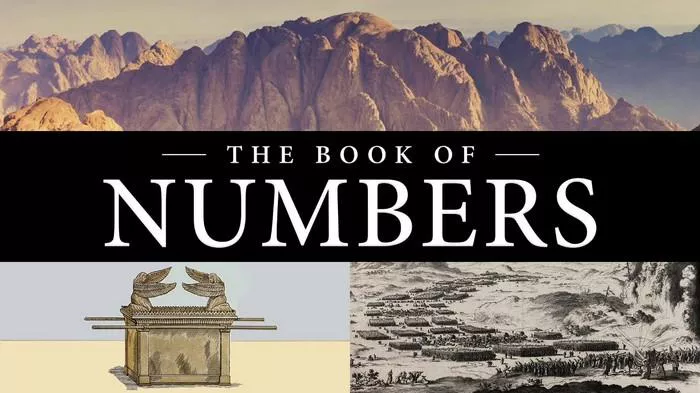The Book of Numbers, known as Bamidbar in Hebrew, is the fourth book of the Torah and the Pentateuch. It occupies a crucial place in the narrative of the Israelites’ journey from Egypt to the Promised Land. Understanding when the Book of Numbers was written involves exploring historical, linguistic, and theological perspectives. This article delves into these aspects to provide a comprehensive overview of the composition and dating of the Book of Numbers.
Historical Context
The Narrative of Numbers
The Book of Numbers narrates the journey of the Israelites from Mount Sinai through the wilderness to the borders of Canaan. It includes censuses of the tribes of Israel, laws, rituals, and accounts of rebellions and battles. The narrative spans approximately 38 years, from the second month of the second year after the Exodus until the end of the fortieth year.
The Traditional View
Traditionally, both Jewish and Christian traditions attribute the authorship of the Book of Numbers to Moses. This view holds that Moses wrote the book during the Israelites’ wanderings in the wilderness, around the 13th century BCE. The belief in Mosaic authorship is based on internal biblical references and long-standing religious tradition.
Modern Scholarly Perspectives
Modern biblical scholarship often challenges the traditional view. Scholars analyze the text using various critical methods, including source criticism, form criticism, and redaction criticism. These methods suggest that the Book of Numbers, like other books of the Pentateuch, is a composite work. It likely incorporates materials from different sources and periods.
Source Criticism and the Documentary Hypothesis
The Documentary Hypothesis
One of the most influential theories in biblical scholarship is the Documentary Hypothesis. This theory posits that the Pentateuch, including the Book of Numbers, is composed of four main sources: J (Yahwist), E (Elohist), P (Priestly), and D (Deuteronomist). Each source reflects different traditions and was written at different times.
Sources in the Book of Numbers
In the Book of Numbers, scholars identify elements from the J, E, and P sources. The Priestly source (P) is particularly prominent, given its focus on genealogies, censuses, and ritual laws. The presence of these diverse sources suggests that the book underwent a complex process of composition and redaction over several centuries.
Linguistic and Textual Analysis
Language and Style
The language and style of the Book of Numbers provide clues about its composition. The book contains both archaic and late Hebrew, indicating that it was written and edited over an extended period. Linguistic features such as vocabulary, syntax, and grammar reflect different stages of the Hebrew language.
Textual Evidence
Textual evidence from ancient manuscripts, such as the Dead Sea Scrolls and the Septuagint, also sheds light on the dating of the Book of Numbers. Variations in these texts suggest that the book existed in multiple forms before being standardized in the Masoretic Text. This textual fluidity implies a long and complex process of transmission and editing.
Archaeological and Historical Corroboration
Correlation with Historical Events
The Book of Numbers contains references to places and events that can be correlated with archaeological findings and historical records. For example, the mention of Edom, Moab, and other neighboring nations provides a historical context for the narrative. However, direct archaeological evidence for the events described in Numbers is limited.
The Wilderness Period
The period of wandering in the wilderness, as described in Numbers, is difficult to corroborate with archaeological evidence. The nomadic lifestyle of the Israelites would have left few material remains. Nevertheless, the general historical framework aligns with what is known about the Late Bronze Age and Early Iron Age in the Near East.
The Role of the Priestly Source
Priestly Concerns and Themes
The Priestly source (P) plays a significant role in the Book of Numbers. This source is characterized by its focus on genealogies, ritual purity, sacrifices, and priestly authority. The prominence of P in Numbers suggests that parts of the book were composed during or after the Babylonian Exile (6th century BCE), when priestly concerns were paramount.
Post-Exilic Redaction
Many scholars argue that the Book of Numbers underwent significant redaction during the post-exilic period. This was a time of rebuilding and reestablishing religious identity for the Jewish community. The emphasis on law, order, and priestly functions in Numbers reflects the concerns of this period.
See Also: How Does Leviticus Point to Jesus?
Theological and Literary Significance
Theological Themes
The Book of Numbers explores several key theological themes, including faithfulness, rebellion, divine justice, and covenant. These themes are central to the broader narrative of the Torah and the relationship between God and the Israelites.
Literary Structure
The structure of the Book of Numbers is complex, with alternating sections of narrative, law, and census data. This intricate structure reflects the diverse sources and traditions that contributed to its composition. The book’s literary coherence, despite its complexity, is a testament to the skill of its redactors.
Conclusion
A Composite Work
The Book of Numbers is a composite work, reflecting a long and multifaceted process of composition and redaction. While traditional views attribute its authorship to Moses in the 13th century BCE, modern scholarship points to a more complex origin. The book likely incorporates materials from different sources and periods, with significant contributions from the Priestly source during the post-exilic era.
Ongoing Research
Research into the dating and composition of the Book of Numbers is ongoing. New archaeological discoveries, advances in linguistic analysis, and comparative studies continue to shed light on this ancient text. Understanding when the Book of Numbers was written enriches our appreciation of its historical and theological significance within the Bible.
The Importance of Context
Recognizing the historical context and composite nature of the Book of Numbers helps readers appreciate its depth and complexity. The book is not merely a historical record but a theological and literary work that has shaped Jewish and Christian traditions for millennia. By exploring its origins, we gain a deeper understanding of its enduring impact.

